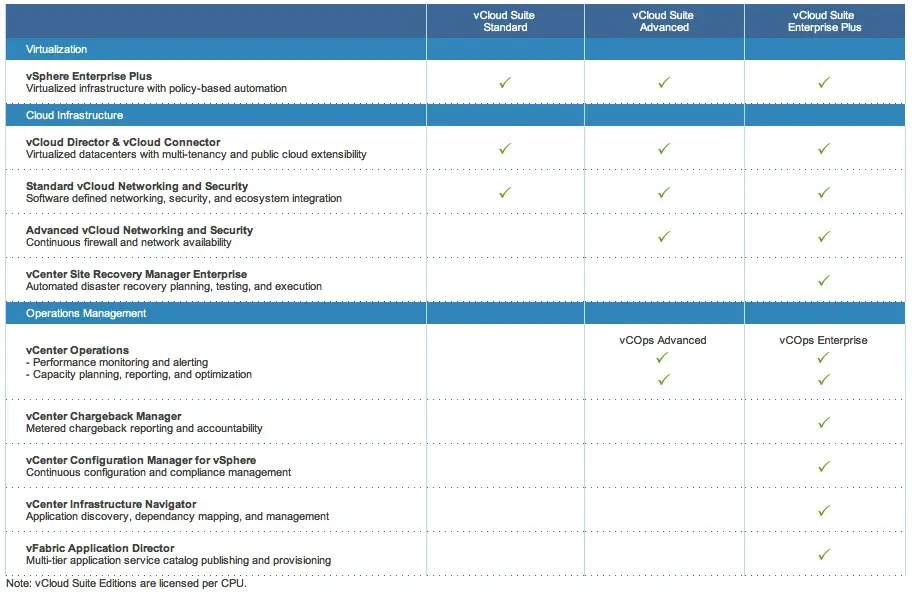This morning, incoming CEO Pat Gelsinger introduced a new bundled product offering – the vCloud Suite. The solution marries vSphere with vCloud Director, networking and security to create a fully automated, software-defined datacenter. The announcement is directly related to needing to change how existing infrastructure is managed to allow it become more agile and save time to free up IT staff to focus on the greater change to achieve an overall cloud vision. The announcement also included the release of version 5.1 for vSphere, vCloud Director and Site Recovery Manager.
The suite has three different levels ranging from Standard to Advanced to Enterprise Plus. The Enterprise Plus offers almost the entire VMware portfolio of software to the customer, including Site Recovery Manager, Operations Manager, Configuration Manager and the vFabric Application Director.
The vCloud Suite Standard level is also being offered as a free upgrade to customers with vSphere Enterprise Plus licenses and up-to-date Software and Service (SnS). Customers with vSphere Enterprise may also take advantage of a discounted upgrade program. This is a considerable new feature grant to existing customers who have loyally paid their annual service and support. It also represents a switch back towards building in new enablement features in the existing licenses that customers own after VMware arguably removed some functionality with the vSphere 5.0 release, like guest OS patching. The free upgrade will allow customers vCloud Director and other additional features without the need to purchase new licenses.
Primarily, the new bundles is intended to simplify the purchasing process for customers hoping to adopt VMware solutions. The suite moves everything to a per CPU (socket) licensing model across all the products and bundles many of the necessary tools together to allow customers to build a cloud. Any products that have been traditional licensed on a per VM basis are now per CPU, as well, including VMware’s Site Recovery Manager.
In addition to the per CPU licensing, the restrictions on number of cores is also absent. vSphere 4.1 had limits on the number of cores per socket that a customer could run. These restrictions were lifted with vSphere 5.0 last year, but VMware introduced the controversial vRAM entitlements at that time.
The new bundles accompanied the news that the poorly received vRAM entitlements would no longer be used for vSphere licenses. Introduced last year, the vRAM entitlements (the vTax, as it was referred to) initially set off a backlash from customers who thought the entitlements were too low and would mean spending a lot of additional money to continue running vSphere. VMware quickly increased the entitlements, but it didn’t do much to help sales staff trying to educate users of the new licensing model. Sales people said that the vRAM entitlements were difficult to explain to customers. The transition back to a per socket model will make things simpler to understand for everyone.
In general, it seems that VMware is working hard to battle increased competition by making customer’s existing licenses provide more value and capabilities.
Note: This post went up a little early without the final details. I apologize.


